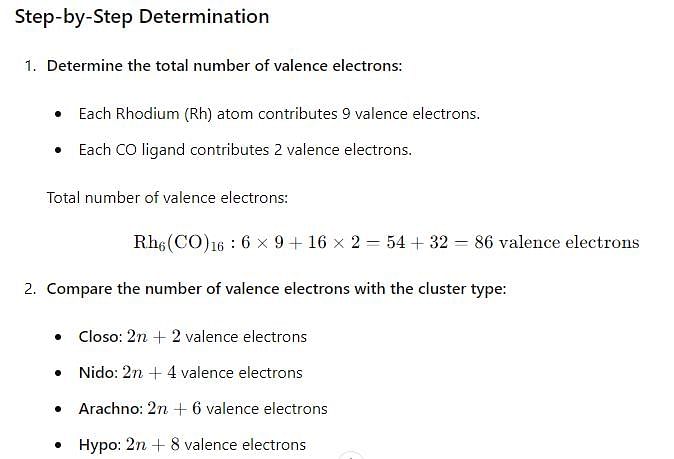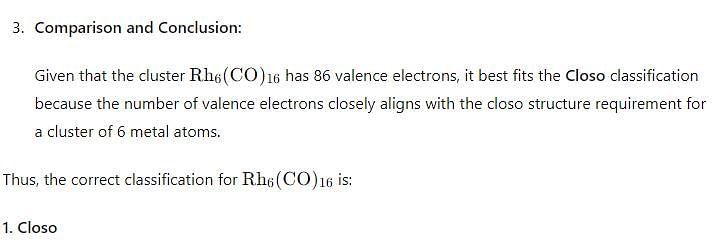Test: Organometallic Chemistry- 2 - Chemistry MCQ
30 Questions MCQ Test Inorganic Chemistry - Test: Organometallic Chemistry- 2
Which one of the following has an optical isomer:
The existence of two different coloured complexes with the composition of [Co(NH3)4Cl2]+ is due to:
| 1 Crore+ students have signed up on EduRev. Have you? Download the App |
Which one of the following complexes is not expected to exhibit isomerism:
The number of metal-metal bonds in [W2(OPh)6] is:
Which of the following metal fragments, d9–MLn is isolabal with CH?
Among the following which option is correct about the thermal stability of given compounds:
(P) HMn(CO)5
(Q) HTe(CO)5
(R) HRe(CO)5
Which of the following is correct about the basicity:
(P) [Mn(CO)5]–
(Q) [Tc(CO)5]–
(R) [Re(CO)5]–
The number of IR bands will be obtain in M(CO)5
Nitrosyl ligand binds to d-metal atoms in linear and bent fashion and behaves, respectively, as
The correct order of νNO (cm–1) in the following compounds is:
If the bond length of CO bond in carbon monoxide is 1.128 Å. Then what is the value of CO bond length in Fe(CO)5:
Which of the following in not suitable as catalyst for hydroformylation:
The catalyst used for the oxidation of ethylene to acetaldehyde is:
Regarding the catalytic cycle of hydrogenation of alkanes involving RhCl(PPh3)3 as t he catalyst, the correct statement is:
The catalyst used in the conversion of ethylene to acetaldehyde using Wacker process:
The homogeneous catalyst that is used in the hydroformylation or hydrocarbonylation is based on:
Metals used in automobile catalytic converters are:
Active catalytic species for hydroformylation is:
An intermediate formed during the hydroformylation of olefins using Co2(CO)8 as catalyst is:
In Monsanto acetic acid process shown below, the role of HI is:
The reaction of acetyl chloride and AlCl3 with ferrocene gives:
The infra–red starching frequency vCO of P-S follows the order:
Ferrocene undergoes Vilsmeir reaction to yield:
In hydroformylation process, propene is converted into
Which second row transition metal is present in the following compound:
|
48 videos|92 docs|41 tests
|
















